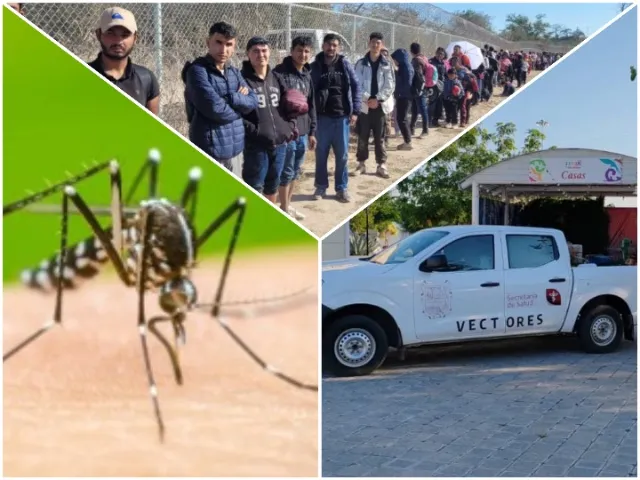Cases of Dengue fever are rising along the Texas-Mexico border with rates in Texas reaching levels not seen in more than two decades. In Mexico, hospitalizations and deaths from complications of the virus are also on the rise.
Despite the proximity of border cities in Mexico and Texas, the rates of contagion with the Dengue virus differ significantly. In Mexico, rates of infection and deaths from the mosquito-borne virus are significantly higher.
In Texas, the first locally acquired case of Dengue fever this year did not appear until November. The Cameron County resident living just miles from the Mexican border contracted the disease in Brownsville, according to the Texas Department of State Health Services (TDSHS). As of November 25, there have been 106 travel-associated dengue cases, including one death reported in Texas. This is the highest annual case count in Texas since 2002.
The agency warned residents to take precautions to protect against mosquito bites in Texas and while traveling internationally to countries where dengue is endemic.
In Mexican border states across from Texas, the virus is having a more dire impact for some surprising reasons. This year alone, it has claimed lives in Tamaulipas and Coahuila. A total of 340 infections have been recorded in Matamoros and Reynosa near McAllen.
According to a report in La Rancherita del Aire News, "33 residents of Coahuila have died because of Dengue complications this year."
In Piedras Negras, health authorities announced that 50 percent of all testing for Dengue fever shows a positive result. Officials struggle due to a shortage of blood and plasma required for treatment.
The Dengue virus is transmitted by infected mosquitoes; about 25 percent will become symptomatic after three to fourteen days with symptoms like fever and headaches. Most recover completely within two weeks but severe infection can be fatal if untreated.
A scientific report noted that "the contrast in infection rates between border residents can be chalked up to lifestyle differences."
The study highlighted Nuevo Laredo's higher infection rate despite a larger vector presence in Laredo due to less air conditioning use: only 24% compared to Laredo's 82%. Homes had fewer intact screens and were closer together than those across the border.
